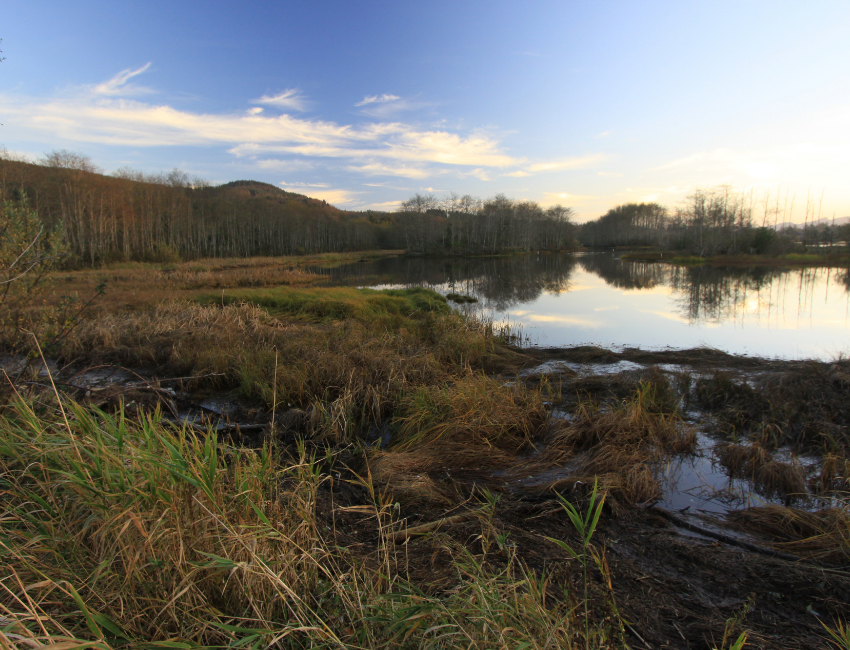
Nestled at the foot of a hillside housing development on the east side of Seaside, the Thompson Creek and Stanley Marsh Habitat Reserve has been part of North Coast Land Conservancy’s family of properties for about 15 years. Over that time, the reserve has expanded by a few acres. However, its value as a contributor to the greater Neawanna system has remained steady.
NCLC acquired the first 80 acres of Thompson Creek-Stanley Marsh in 2006, accelerating an innovative and successful wetlands restoration project that was designed around the property’s natural inhabitants—namely, beavers. The hope was to return the reserve to its historic condition as a Sitka spruce swamp.
“It’s a pretty unique and complex system out there,” NCLC Project Manager Amy Hutmacher says.
Even before NCLC took ownership of the property, however, a tide gate was removed, sparking the reintroduction of saltwater into Stanley Lake and reconnecting it to the surrounding system. The ocean saltwater brought in estuarine creatures, and otters again had a reason to visit in search of food.

Thompson Creek regularly experiences a significant number of spawning Coho salmon.
NCLC added three more acres of land to the reserve in 2017 and another half-acre in 2019. According to Hutmacher, the story behind the conservation of Thompson Creek-Stanley Marsh is rather atypical and inspiring. NCLC worked in partnership with a developer “to set aside the most important parts of the property to preserve the hydrology and ecological connectivity as best as could be done,” while homes were simultaneously built alongside the reserve.
As part of the conservation strategy, levees were breached, letting water flow. Pieces of woody debris were placed in strategic locations. And old fill material was creatively repurposed to craft uplands where spruce trees could thrive.
The creek and tidally influenced floodplain that comprise the reserve now brim with various creatures, whose life histories and current activities are inherently woven into the landscape. Thompson Creek experiences some of the highest numbers of spawning Coho salmon in the Neawanna watershed. Various birds also frequent the marshy edges of Stanley Lake. Meanwhile, a robust beaver population helps maintain the property by building dams, effectively enlarging the wetlands and creating habitat for other wildlife. The trick is to simply support their efforts by leaving them alone to do their handiwork.

Beavers are some of the primary residents of the habitat reserve.
While the property remains under the domain of its natural inhabitants, it’s not a remote wilderness. The beavers’ wetland engineering is taking place in and around the city of Seaside, enhancing views and improving the water quality for citizens. Those who stop and take a moment to look at the habitat reserve will capture a glimpse of a functional ecosystem, where the rain, sunshine, tides, plants and wildlife interact in perfect symbiosis.
From a stewardship perspective, the reserve’s semi-urban location presents both challenges and opportunities as, over time, it has amassed a significant number of neighbors. The key is communicating regularly with adjacent property owners, increasing awareness about their proximity to the conserved area and impressing upon them “that it’s a really good thing,” Hutmacher says.
“It gives us an opportunity to engage with a lot of different people because we own this property that’s in their backyard,” she adds.
However, with ownership comes responsibility—and ongoing responsibility, as Hutmacher points out.
“It’s not just, ‘this land was protected forevermore, so be it,’” she says. “It really is this ongoing process. We work with partners and land owners to manage it in perpetuity.”
Comments